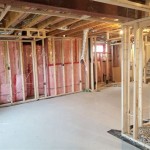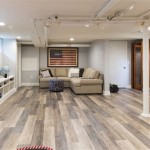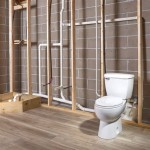Building a Bathroom in Your Basement: A Comprehensive Guide
Transforming your basement into a functional and comfortable living space often involves adding a bathroom. Whether you're looking to create a convenient guest bathroom or a full-fledged master suite, building a bathroom in your basement requires careful planning and execution. This comprehensive guide will walk you through the essential aspects of this project, ensuring a successful and rewarding outcome.
1. Planning and Permits
Before embarking on any construction work, it's crucial to obtain the necessary permits from your local building department. This step ensures compliance with building codes and safety regulations. Additionally, you'll need to create detailed plans for your bathroom, including the layout, plumbing fixtures, and electrical outlets. Consider factors such as ventilation, natural light sources, and accessibility.
2. Moisture Control
Basements are prone to moisture, which can lead to mold growth and structural damage. To prevent these issues, it's essential to address moisture control measures. This includes installing a vapor barrier on the basement walls and floor, as well as ensuring proper ventilation through bathroom fans and exhaust ducts. Additionally, you may consider using water-resistant materials for the bathroom walls and floor.
3. Plumbing Considerations
Plumbing is a critical aspect of any bathroom installation, and in a basement bathroom, it's especially important to ensure proper drainage and waste disposal. Consult with a licensed plumber to determine the best placement for the toilet, sink, and shower. Consider the location of existing plumbing lines and assess the feasibility of connecting the new bathroom to the main sewer system.
4. Electrical Wiring
Electrical wiring is another essential aspect of bathroom construction, ensuring the safe and reliable operation of lighting fixtures, outlets, and appliances. Hire a licensed electrician to install new electrical lines, switches, and outlets as required. Pay attention to the placement of lighting fixtures to provide adequate illumination and create a functional and inviting atmosphere in the bathroom.
5. Ventilation
Proper ventilation is crucial for removing moisture and preventing mold growth in the bathroom. Install an exhaust fan that vents directly to the outside, either through a duct or a window. Additionally, consider using bathroom fans with humidity sensors, which turn on automatically when the humidity level rises, ensuring continuous ventilation.
6. Lighting
Good lighting is essential for any bathroom, both for practical use and aesthetic appeal. Combine different types of lighting to create a well-lit space. Overhead lighting provides general illumination, while task lighting, such as vanity lights, illuminates specific areas like the mirror and sink. Consider adding accent lighting to enhance the ambiance and create a more inviting atmosphere.
7. Materials and Finishes
The choice of materials and finishes for your basement bathroom will depend on your personal style and the overall design of the space. For flooring, consider materials such as ceramic or porcelain tile, which are durable and moisture-resistant. For the walls, you can use drywall, moisture-resistant panels, or even wallpaper specifically designed for use in bathrooms. When selecting fixtures, such as the vanity, toilet, and shower, opt for materials that complement the overall design and provide functionality.
8. Cost Considerations
Building a bathroom in your basement involves various expenses, including materials, labor, and permits. The cost will vary depending on the size of the bathroom, the materials used, and the complexity of the installation. It's advisable to set a budget and stick to it as much as possible. If necessary, consider exploring cost-saving measures, such as using affordable materials and doing some of the work yourself if you have the necessary skills.
9. DIY vs. Hiring a Contractor
Whether to tackle the bathroom construction yourself or hire a contractor is a decision to be made carefully. If you possess DIY skills and are confident in handling all aspects of the project, you may choose to do it yourself. However, if you're not comfortable with plumbing or electrical work, it's highly recommended to hire licensed professionals. They will ensure compliance with building codes, safety regulations, and provide peace of mind.
10. Timeline
The timeline for completing your basement bathroom will depend on the size and complexity of the project, as well as the availability of materials and labor. Allow for delays due to unforeseen circumstances or material shortages. Keep in regular communication with contractors to ensure the project stays on track and meets your expectations.
Conclusion
Building a bathroom in your basement can be a rewarding project that adds both convenience and value to your home. By carefully planning, addressing moisture control measures, and ensuring proper plumbing and electrical installations, you can create a functional and stylish bathroom that meets your needs. Remember to consider ventilation, lighting, materials, and cost factors, and don't hesitate to seek professional assistance if needed. With meticulous planning and execution, you can transform your basement into a more comfortable and enjoyable living space.
How To Plumb A Basement Bathroom Diy Family Handyman

No Rough In Problem Our Diy Bathroom Basement From A Closest Cheap And Beautiful This Life

A Basement Bathroom Renovation Merrypad

How To Finish A Basement Bathroom Before And After S

Basement Bathroom Plumbing Planning For A Below Grade Lavatory

Pin On Glass Floor

How To Finish A Basement Bathroom Before And After S

Basement Bathroom Plumbing Planning For A Below Grade Lavatory

No Rough In Problem Our Diy Bathroom Basement From A Closest Cheap And Beautiful This Life

How To Install A Basement Bathroom Awesome Quick Tips By Home Repair Tutor Youtube








